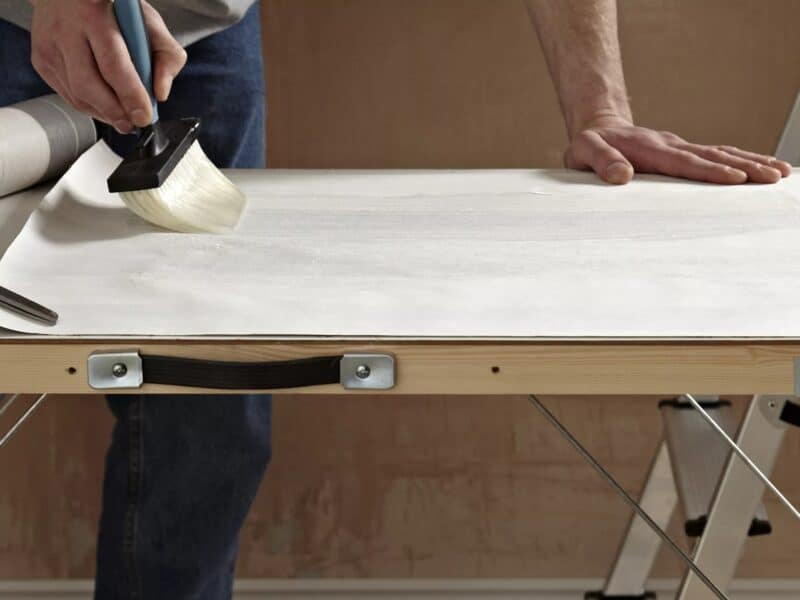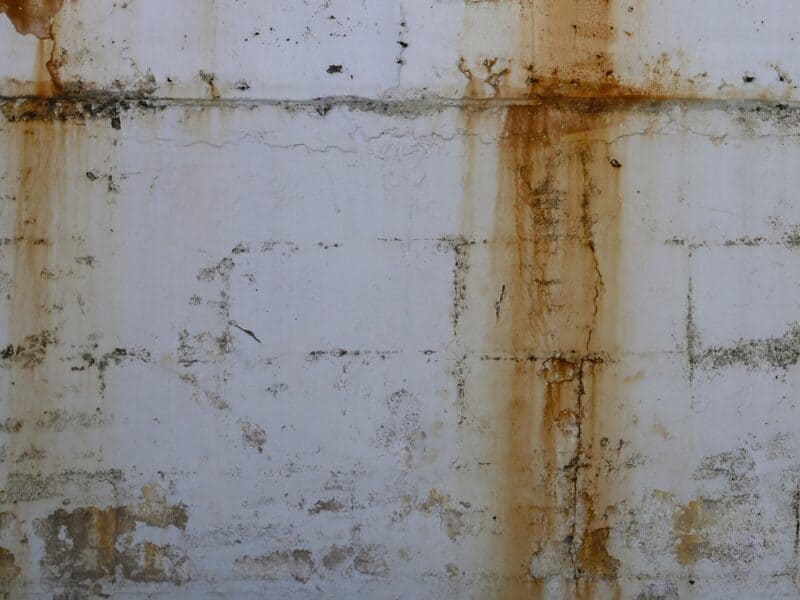An all-in-one primer, sealer & stain-block formulated as a base coat which enables you to paint over existing wallpaper, Zinsser Wallpaper Cover Up is easy to use and leaves a flat white surface ideal for over-painting with any emulsion finish.
Painting Over Wallpaper
If you’re planning on changing your current decor from wallpaper to a painted finish it can be tempting to forgo the stripping/preparation stage and jump straight to painting with a matt or silk emulsion but this rarely ends well…
The problems you’ll find when painting over existing wallpaper are threefold:
- You’re reliant on how well the paper is stuck to the wall, adding emulsion paint to a wallcovering that is not firmly stuck down will result in bubbling & peeling.
- Painting over wallpaper with a water-based finish will also result in swelling and opening-up of joints that can be difficult to hide.
- Waterborne inks and dyes on the surface of the paper can also migrate through water-based finishes, resulting in unsightly staining.
As a spirit-based product, Cover-Up eliminates these problems by acting as a barrier between the wallpaper and subsequent coats of paints. It can be applied by roller or brush and dries fully within 4 hours, enabling you to get the whole job done in a single day.
Available Online From…
How to Use Zinnser Wallpaper Cover-Up
You can use Cover-Up just like any other paint and apply with a roller or large brush but bear in mind that being solvent based you’ll need to clean rollers & brushes afterwards with white-spirit, which can be messy.
- Try wetting the paper first to ensure it’s fully stuck down, leave for 10 minutes to see if any bubbles or blisters develop. In some cases these can be repaired and stuck down but in excessive cases you’re best admitting defeat and just stripping the walls.
- Assuming there are no obvious problems, paint the entire wall with Cover-Up in one uniform coat and allow 4 hours to dry.
- Coverage is between 5㎡ and 8㎡ per litre, depending on the porosity of the wallpaper.
- Once dry, sand down and fill any opened-up edges, allow to dry and then prime the repaired area with another coat of Cover-Up.
- When all repairs are complete, lightly sand-down the whole area to remove any nibs or bits to provide a smooth surface.
- Paint as normal with 2 coats of your chosen finish.
Are there any disadvantages to using Zinsser Cover-Up?
Of course, no paint product is magic and the success of any job will depend upon ideal conditions. If the wallpaper is not firmly stuck down then this product isn’t going to help.
You may also get joints opening up, although, once dried, you may sand the edges down lightly and fill with a standard all-purpose filler in order to get a smooth finish.
Cover-Up is also solvent based so does create a lot of odour.
The product also contains quite a high level of Volatile Organic Chemicals (VOCs), 335g per litre. *The safe limit for Solvent-bourne paint primers (Category G/SB) is 350g per litre
For this reason it’s not advisable for use in childrens’ bedrooms or anywhere where there is poor ventilation – unless the room can be fully aired for a few days after application.
Alternatives
The obvious alternative to using Cover-Up is to do the job properly and strip the wallpaper off the wall. Failing this, you can attempt to paint your finish of choice direct onto the paper as this will often work with decent enough results.
If you do get edges opening up they can be treated locally with a coat of oil-based primer or Zinsser B-I-N, which will act as a sealer and also firm-up the edges so you can sand them down and fill.
*The Volatile Organic Compounds in Paints, Varnishes and Vehicle Refinishing Products Regulations 2012 [link]




